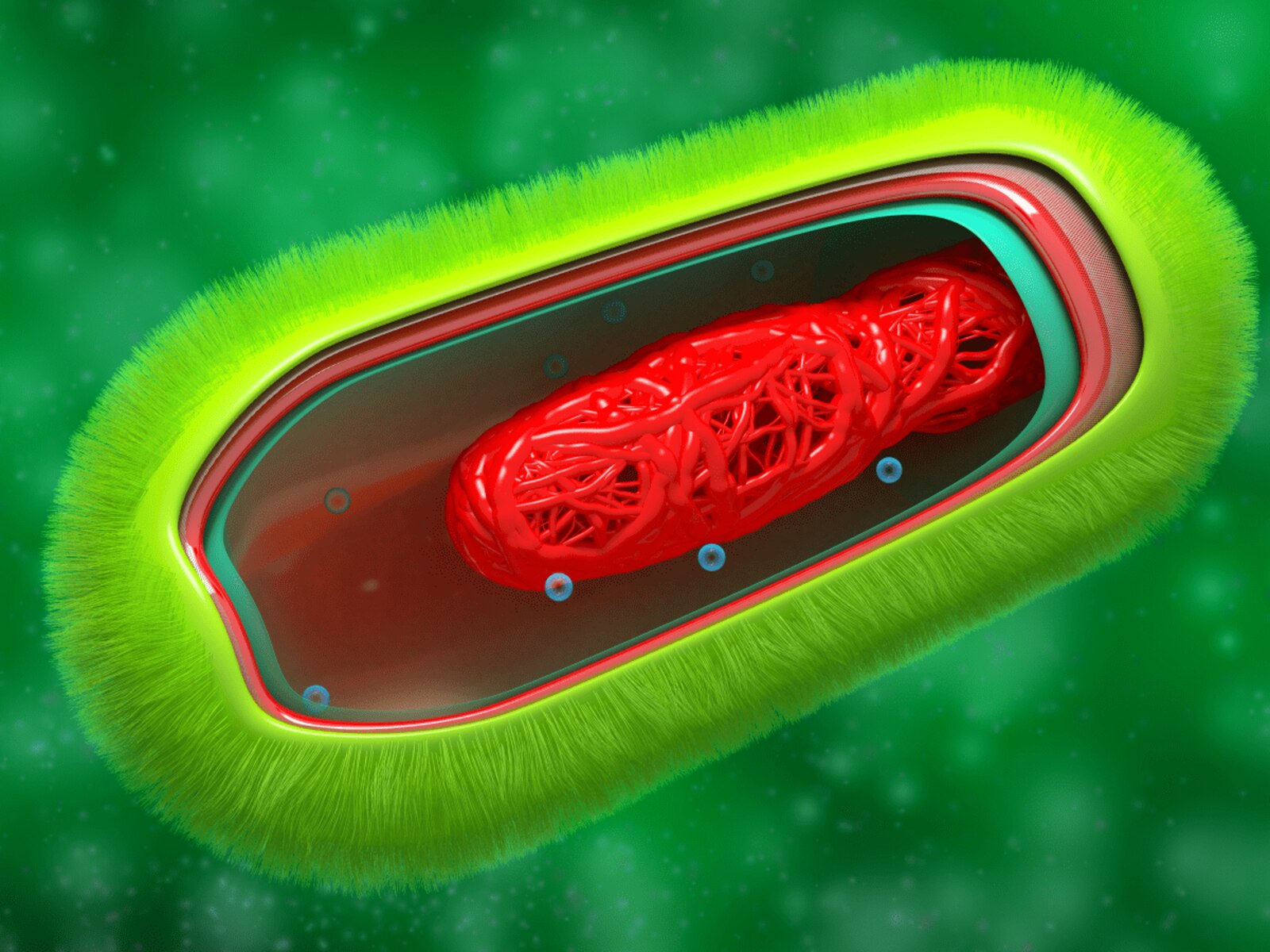
Prokaryotic cells are fascinating microscopic organisms that play a vital role in the natural world. These cells lack a true nucleus and other membrane-bound organelles, setting them apart from their eukaryotic counterparts. Despite their simplicity, prokaryotic cells showcase a range of remarkable characteristics that contribute to their astounding adaptability and success.
In this article, we will delve into 11 unbelievable facts about prokaryotic cells. From their diverse shapes and sizes to their unique methods of obtaining energy, these cells never cease to amaze. Whether you’re a biology enthusiast or simply curious about the fascinating world of microorganisms, these facts will leave you in awe of the wonders of prokaryotic life.
Key Takeaways:
- Prokaryotic cells are incredibly small, lack a true nucleus, and have unique cell walls made of peptidoglycan. They play essential roles in nutrient cycling and exhibit remarkable genetic diversity, showcasing the wonders of the natural world.
- Prokaryotic cells are found in diverse environments, from deep-sea hydrothermal vents to inside the human body. They reproduce rapidly through binary fission, communicate through quorum sensing, and form symbiotic relationships, highlighting their adaptability and ecological success.
Prokaryotic cells lack a nucleus
Unlike eukaryotic cells, prokaryotic cells do not have a true nucleus. Instead, their DNA is found in the cytoplasm, forming a single circular chromosome. This allows for efficient gene expression and replication in these cells.
They are incredibly small
Prokaryotic cells are typically much smaller than eukaryotic cells, with an average size of 1-10 micrometers. Despite their small size, they pack all the necessary cellular machinery to carry out essential functions of life.
Prokaryotic cells are found in various environments
These amazing cells can be found in a wide range of environments, including deep-sea hydrothermal vents, hot springs, soil, and even inside the human body. They are incredibly adaptable and have successfully colonized diverse habitats.
They have unique cell walls
Prokaryotic cells have cell walls made up of peptidoglycan, a complex molecule that provides structural support and protection. This feature distinguishes them from eukaryotic cells, which have different types of cell walls or none at all.
Prokaryotes reproduce rapidly
Prokaryotic cells have a rapid reproduction rate, enabling them to populate an area quickly. Through a process called binary fission, one cell can divide into two identical daughter cells within a short period, allowing for rapid growth and colonization.
They exhibit a wide range of metabolic capabilities
Prokaryotic cells are incredibly diverse in their metabolic abilities. Some can survive in extreme environments, such as acidic or highly saline conditions, while others are capable of photosynthesis or nitrogen fixation. This versatility has contributed to their ecological success.
Prokaryotes can form symbiotic relationships
Prokaryotic cells are known to form symbiotic relationships with other organisms. For example, nitrogen-fixing bacteria live in the roots of leguminous plants, providing them with essential nutrients while benefiting from the plant’s organic compounds.
Prokaryotic cells can communicate
Prokaryotes can communicate with each other through a process called quorum sensing. They release signaling molecules that allow them to coordinate certain behaviors, such as forming biofilms or expressing virulence factors.
Some prokaryotes are extremophiles
Certain prokaryotic species known as extremophiles thrive in extreme environments that would be lethal to most other organisms. They can withstand high temperatures, acidic pH, high pressure, and even survive in space.
Prokaryotic cells play essential roles in nutrient cycling
Prokaryotes are vital in the cycle of nutrients on Earth. They decompose organic matter, breaking down complex compounds into simpler forms that can be reused by other organisms. Without prokaryotes, the recycling of nutrients would be significantly impaired.
They have a remarkable genetic diversity
Prokaryotic cells exhibit a remarkable genetic diversity, with vast variations in their genetic material. This diversity contributes to their ability to adapt and survive in different environments and allows them to occupy various ecological niches.
As we’ve explored these 11 unbelievable facts about prokaryotic cells, it’s evident that these microscopic organisms are truly remarkable. Their unique characteristics and adaptability showcase the wonders of the natural world and the intricacies of life itself.
Remember, the 11 Unbelievable Facts About Prokaryotic Cell are just the tip of the iceberg when it comes to the complexity and diversity of these fascinating cells.
Conclusion
In conclusion, prokaryotic cells are fascinating organisms that play a crucial role in our world. Their unique characteristics and abilities set them apart from eukaryotic cells, making them a topic of great interest and study in the field of biology. From their diversity in size and shape to their ability to thrive in extreme environments, prokaryotic cells continue to amaze scientists and researchers.
By understanding the unbelievable facts about prokaryotic cells, we can gain a deeper appreciation for the complexity and diversity of life on Earth. Whether it’s their role in nutrient cycling, their ability to adapt to changing environments, or their impact on human health, prokaryotic cells are truly remarkable and continue to provide us with valuable insights into the fundamental principles of biology.
As our knowledge and understanding of prokaryotic cells continues to evolve, there is no doubt that we will uncover even more incredible facts about these tiny but powerful organisms. So, let us continue to delve into the world of prokaryotic cells and unravel the mysteries that lie within their microscopic structures.
FAQs
Q: What are prokaryotic cells?
A: Prokaryotic cells are a type of cell that lacks a nucleus and membrane-bound organelles. They are typically smaller and simpler in structure compared to eukaryotic cells.
Q: How do prokaryotic cells reproduce?
A: Prokaryotic cells reproduce through a process called binary fission, where the cell divides into two identical daughter cells.
Q: What is the role of prokaryotic cells in the environment?
A: Prokaryotic cells play a crucial role in the environment by participating in nutrient cycling, decomposition, and symbiotic relationships with other organisms.
Q: Can prokaryotic cells cause diseases?
A: Yes, certain prokaryotic cells can cause diseases in humans and other organisms. Examples include bacteria such as E. coli and Streptococcus.
Q: Can prokaryotic cells survive in extreme environments?
A: Yes, prokaryotic cells are known for their ability to thrive in extreme environments such as hot springs, acidic conditions, and deep-sea hydrothermal vents.
Q: Are all bacteria considered prokaryotic cells?
A: Yes, all bacteria are classified as prokaryotic cells. They are a diverse group of microorganisms that can be found in various habitats.
Prokaryotic cells may be small, but their impact on life is immense. Want to learn more about cellular wonders? Dive into the fascinating world of the endoplasmic reticulum, where proteins and lipids are synthesized within the cytoplasm. Discover how ribosomes act as protein-building factories, translating genetic information into functional molecules. Explore the mind-boggling process of horizontal gene transfer, which allows organisms to share genetic material across species boundaries, driving evolutionary change and adaptation.
Was this page helpful?
Our commitment to delivering trustworthy and engaging content is at the heart of what we do. Each fact on our site is contributed by real users like you, bringing a wealth of diverse insights and information. To ensure the highest standards of accuracy and reliability, our dedicated editors meticulously review each submission. This process guarantees that the facts we share are not only fascinating but also credible. Trust in our commitment to quality and authenticity as you explore and learn with us.


